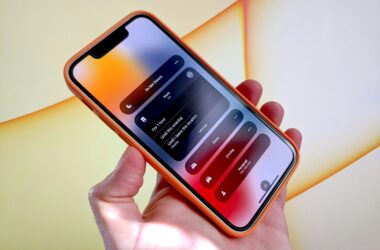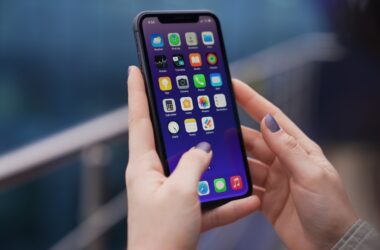Introduction
We’ve all been there—opening our phones or laptops only to be greeted by a chaotic mess of apps and notifications. The endless swiping and searching for the right app can be frustrating and time-consuming. Whether it’s juggling between multiple work tools or trying to locate that one productivity app hidden among countless others, digital clutter is a common struggle that hampers our efficiency and focus.
But what if I told you that with a bit of organization, you could transform this digital chaos into a streamlined, productivity-boosting system? By thoughtfully arranging your apps, you can enhance your productivity, reduce stress, and make your digital life much more manageable.
In this post, we’ll explore why organizing your apps is crucial for maximizing productivity and provide a step-by-step guide to assess your current app usage. We’ll discuss how to choose the right productivity apps for your needs and share practical strategies for organizing them on your devices. Finally, we’ll offer tips on maintaining an organized digital workspace to ensure you stay on top of your game.
1. Understanding the Importance of App Organization
Organizing your apps isn’t just about aesthetics; it’s about functionality and efficiency. A well-organized digital workspace can significantly boost your productivity by reducing the time you spend searching for the right tools. When your apps are logically arranged, you can access them quickly and effortlessly, which helps you stay focused and maintain a steady workflow.
Consider this: a study by the IDC found that knowledge workers spend an average of 2.5 hours per day searching for information. This figure includes time spent looking for the right app or tool. By organizing your apps, you can cut down on this wasted time. For instance, imagine starting your workday by opening your phone or computer and having all your essential productivity apps—like task managers, calendars, and note-taking tools—neatly categorized and easily accessible. This kind of setup can save you minutes, if not hours, each day, allowing you to focus more on your actual tasks.
2. Assessing Your Current App Usage
Before you can organize your apps effectively, it’s crucial to evaluate which ones you actually use. Many of us accumulate a variety of apps over time, leading to clutter and inefficiency. By taking stock of your current app usage, you can identify which apps are essential and which ones are merely taking up space. This evaluation is a critical first step in digital organization and app management.
Steps:
- Review Your Apps: Start by going through all the apps on your devices. Make a list of every app you have installed.
- Categorize: Divide the apps into categories such as productivity, social media, entertainment, utilities, and work-related tools. This will help you see which areas might be overloaded with unnecessary apps.
- Evaluate Usage: For each app, ask yourself when you last used it. If you haven’t used an app in the past month, it might not be as essential as you thought.
- Identify Essentials: Highlight the apps that you use daily or weekly. These are your essential tools and should be prioritized in your organization.
- Remove Clutter: Uninstall or move rarely used apps to a secondary screen or folder. Keeping only the best productivity apps and essential tools on your main screen will streamline your workflow.
3. Choosing the Right Productivity Apps
Not all productivity apps are created equal. The right app can make a significant difference in how effectively you manage your time and tasks. When choosing productivity apps, look for features that align with your specific needs. Key features to consider include user-friendly interfaces, cross-platform compatibility, integration with other tools, and robust functionality that addresses your productivity goals.
Suggestions:
To help you get started, here are some of the best productivity apps for 2024, tailored to different needs:
- Task Management:
- Todoist: Known for its simplicity and powerful features, Todoist is perfect for managing tasks and projects. It offers natural language input, project templates, and integration with other productivity tools.
- Trello: Trello uses a card-based system that’s ideal for visual thinkers. It’s excellent for organizing tasks, projects, and even collaborative work with its intuitive drag-and-drop interface.
- Time Management:
- RescueTime: This app runs in the background and tracks your time spent on various activities, providing detailed reports that help you identify productivity bottlenecks.
- Focus@Will: Combining neuroscience and music, Focus@Will helps improve your focus by providing background music specifically designed to boost concentration and productivity.
- Workflow Apps:
- Notion: A versatile app that combines notes, tasks, databases, and calendars into one. Notion is highly customizable, making it suitable for personal productivity and team collaboration.
- Zapier: Zapier automates workflows by connecting different apps and services. It allows you to create “Zaps” that trigger actions between apps, saving you time and effort on repetitive tasks.
- Note-Taking:
- Evernote: A long-time favorite, Evernote excels in organizing notes, web clippings, images, and documents. Its powerful search and tagging features make it easy to find information quickly.
- Microsoft OneNote: Integrated with the Microsoft Office suite, OneNote is great for those who need a comprehensive note-taking tool that syncs seamlessly across devices.
Choosing the right productivity apps can transform how you manage your time and tasks, ultimately leading to a more efficient and organized digital life.
4. Strategies for Organizing Your Apps
Once you have the right productivity apps, the next step is organizing them efficiently on your devices. An organized digital workspace not only looks neat but also enhances your productivity by making it easier to access the tools you need when you need them. Here are some practical tips for organizing apps on different devices.
Methods:
- Folder Organization:
- Group by Category: Create folders based on app categories such as “Work,” “Personal,” “Social Media,” “Entertainment,” and “Utilities.” This approach helps you quickly find apps based on their function.
- Name Folders Clearly: Use clear and descriptive names for your folders. For instance, instead of just “Productivity,” you might have folders named “Task Management,” “Notes,” and “Time Tracking.”
- Limit Apps per Folder: Avoid overloading folders with too many apps. Aim for 8-10 apps per folder to keep it manageable and visually clean.
- App Prioritization:
- Home Screen Real Estate: Place the most frequently used productivity apps on your home screen for easy access. These might include your task manager, calendar, and note-taking app.
- Dock/Taskbar: Utilize the dock (on mobile devices) or taskbar (on desktops) for your top 4-5 essential apps. This ensures they are always within reach.
- Secondary Screens: Move less frequently used apps to secondary screens or folders. For example, apps used for occasional tasks or specific projects can be placed here.
- Decluttering Techniques:
- Regular Review: Set a reminder to review your apps every month or quarter. Remove apps you no longer use or need.
- One In, One Out Rule: For every new app you download, consider deleting an old one. This helps keep your app count manageable.
- Minimalist Approach: Adopt a minimalist approach by only keeping apps that serve a clear purpose and add value to your productivity. Less is often more when it comes to digital tools.
Example Setup:
- Home Screen: Task manager (e.g., Todoist), calendar (e.g., Google Calendar), note-taking app (e.g., Evernote), communication tool (e.g., Slack).
- First Folder (Productivity): Time tracking (e.g., RescueTime), project management (e.g., Trello), automation tool (e.g., Zapier).
- Second Folder (Utilities): File management (e.g., Google Drive), cloud storage (e.g., Dropbox), security (e.g., LastPass).
By implementing these strategies, you can ensure that your digital workspace remains organized, efficient, and conducive to productivity.
5. Maintaining an Organized Digital Workspace
Organizing your apps is not a one-time task. Regular maintenance and updates are crucial to keeping your digital workspace efficient and clutter-free. Just like a physical workspace, a digital environment needs consistent attention to stay organized and functional.
Advice:
- Set Regular Reminders: Schedule monthly or quarterly reminders to review your app organization. This ensures you regularly assess which apps are still useful and which ones can be removed.
- Update Apps: Keep your apps updated to benefit from new features and security improvements. Updated apps often have enhanced functionalities that can boost your productivity.
- Evaluate App Usage: Periodically check your app usage stats to see which apps are used frequently and which are not. Remove or archive apps that you haven’t used in the past few months.
- Reorganize Folders: As your needs change, you may find that your current organization system no longer works as well. Be flexible and willing to reorganize folders to match your current workflow.
- Backup Regularly: Ensure you have regular backups of your apps and data. This prevents data loss and makes it easier to restore your digital workspace in case of device failure.
- Adopt Minimalism: Embrace a minimalist approach by limiting the number of apps you use. Focus on a few high-quality apps that serve multiple functions rather than having numerous single-purpose apps.
By following these tips, you can maintain an organized digital workspace that continually supports your productivity and efficiency.
Conclusion
In this post, we’ve explored how organizing your apps can significantly boost your productivity. We started by understanding the importance of app organization and how it can save time and reduce stress. Next, we discussed the steps to assess your current app usage, followed by recommendations for choosing the right productivity apps to fit your needs. We then shared practical strategies for organizing your apps on different devices, emphasizing folder organization, app prioritization, and decluttering techniques. Finally, we highlighted the importance of regular maintenance and updates to keep your digital workspace efficient and clutter-free.
Now that you have the tools and strategies to organize your apps for maximum productivity, it’s time to take action. Start by assessing your current app usage and implement the tips shared in this post to create a more organized digital workspace. Don’t forget to regularly maintain and update your setup to ensure it remains effective. Share your experiences and any additional tips you have in the comments section. Let’s create a community of productivity enthusiasts who support each other in optimizing our digital lives!







